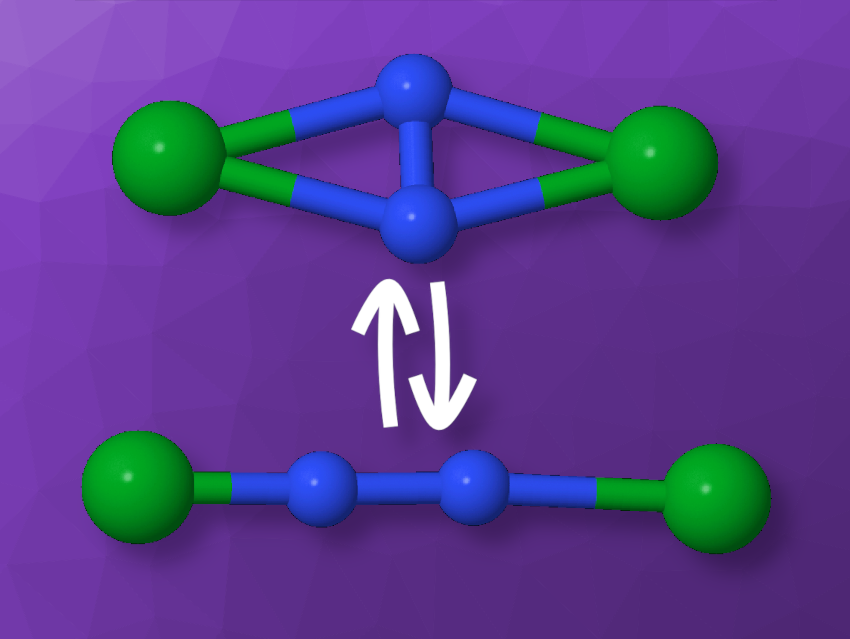Molecular photoswitches, which undergo a reversible isomerization when irradiated with light, can be useful, for example, in functional materials. Most often, organic compounds are used in this context. Photoswitches that use metal complexes of N2 are an interesting alternative, with many metal and ligand options affecting their suitability as switches and their properties. Such photoswitches are generally less well-studied than their organic counterparts—for example, no lanthanide N2 photoswitch had been reported so far.
Enrique R. Batista, Ping Yang, Benjamin L. Davis, Los Alamos National Laboratory, NM, USA, and colleagues have synthesized the first lanthanide N2 photoswitch, a complex with two lutetium centers (central Lu–N2–Lu unit pictured). The team used the compound [(C5Me4H)2(THF)Lu]2(μ–η2:η2-N2), with THF = tetrahydrofuran, which features two lutetium sandwich complexes with substituted cyclopentadienyl ligands that bind a dianionic dinitrogen group between them.
The researchers found that this complex undergoes a reversible side-on to end-on isomerization of the [N2]2– unit to form [(C5Me4H)2(THF)Lu]2(μ–η1:η1-N2) under near-infrared (NIR) light irradiation. According to the team, this could potentially represent a new mode of photoswitching that had not previously been observed. The end-on-coordinated product also showed interesting reactivity, such as a redox reaction with anthracene that gives dihydroanthracene and an anthracene dimer.
- Photoinduced Isomerization of [N2]2– in a Bimetallic Lutetium Complex,
Mingbin Yuan, Andrew J. McNeece, Ekaterina A. Dolgopolova, Laura Wolfsberg, Eric G. Bowes, Enrique R. Batista, Ping Yang, Alexander Filatov, Benjamin L. Davis,
J. Am. Chem. Soc. 2024.
https://doi.org/10.1021/jacs.4c10950




